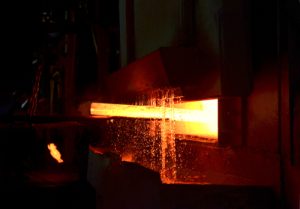 Why Is Metal Quench Tempered?
Why Is Metal Quench Tempered?
The hardening process of quenching and tempering is a heat treatment procedure for improving the mechanical properties of metals and alloys. It involves heating a material to an elevated temperature, then cooling it rapidly (quenching) before reheating it to a lower temperature to improve the ductility of the materials. This process is essential for high-stress manufacturing machinery and gears that undergo repeated and heavy loads over time. It allows these parts to offer extreme strength and durability that ensures they remain reliable for years to come.
Strength
After metalworkers heat steel, they often bring it back to room temperature quickly using a quenching process. This cooling method reduces the risk of dramatic changes in a steel’s microstructure that could compromise its strength. Quenching can be done with a variety of liquids, gases and special-purpose polymers. The choice of the medium and the cooling process is critical to achieving the desired results. Besides water, molten salts also can be used to quench parts. This quenching method offers a reduced risk of distortion or cracking because molten salts are hotter than cold oils. The resulting quenched steel is much tougher than regular carbon steel, and it’s more ductile and weldable too. It’s important to remember that the brittleness caused by quenching can be removed through a second heat treatment process called tempering.
Durability
Quenching can be done in a variety of ways depending on the type of steel being quenched and the final hardness desired. It is an important heat treatment that can prevent unwanted low-temperature processes, such as phase transformations, from occurring. This can be a crucial step in the fabrication of a tough and durable product. It also allows the metal to gain a greater amount of workability and ductility, which is a big advantage.
Mediums
Aside from water, there are also oil, nitrogen, argon, and pressurized air quench media that can cool metal to higher temperatures faster than water. This is why it’s important to choose the right quenching medium for your application. The right medium will also help you minimize the risk of warping and other common problems with this method of cooling. The best results can be achieved with the proper equipment and a lot of knowledge about the different options. Using the right quenching method is key to getting the most out of your metal, especially when you’re trying to achieve an exceptional hardness.
